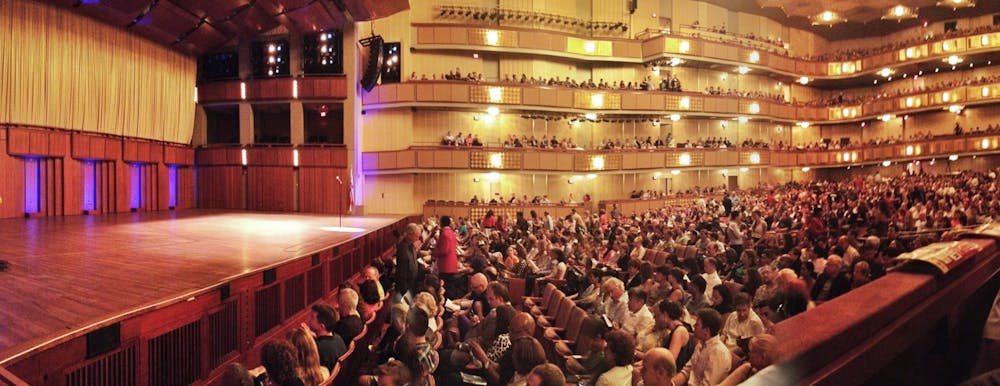“I believe in a cruel God who has created me in His image.” These sacrilegious words begin Iago’s aria in composer Giuseppe Verdi’s Otello, characterizing mankind as inherently bitter and wicked. It is in Iago’s dark worldview that director David Alden seems to base his production of the opera, now showing at The Kennedy Center with the Washington National Opera and starring Russell Thomas, George Gagnidze and Leah Crocetto. Otello, based on Shakespeare’s Othello, is considered a crowning achievement of the composer’s late period and also provides a pinnacle role for the dramatic tenor.
The tormented Otello has traditionally been the focus of the opera, warning of the devastating repercussions of feeding the green-eyed monster of jealousy. Interestingly, before its completion, the opera went under the working title “Iago.” Likewise, the Iago of Alden’s interpretation upstages Otello, as if to reclaim his stolen spotlight. This is apparent from the first act’s final moments, when Otello and his wife Desdemona sing a touching duet, reflecting on their first meeting and looking forward to their future together.
As the couple embraces after their last lingering notes, Iago enters behind them, casting his long shadow across the stage. This untraditional staging choice casts this previously pure moment in a new light, characterizing Iago’s eventual destruction of the relationship as inevitable.
Iago’s nihilistic philosophy permeates into nearly every aspect of the production. Alden’s world of Otello is one void of color, with both the costumes and the set appearing almost monochrome. It also utilizes high contrast lighting, creating black shadows of the characters as they mimic their onstage counterparts.
Even the unnamed characters of the chorus embody Iago’s apathy, barely reacting to the events going on. Following Otello’s victory at sea which starts the opera, Cyprus erupts in celebration, with both townsfolk and soldiers taking to the streets to sing and drink. In this production, however, the townspeople stand in an unmoving mass off to the side of the stage. Their lethargy is further highlighted by the disconnect between their action, or lack thereof, and the vibrant song they sing, with lyrics celebrating festivities.
This disassociation between the libretto and the staging reappears many times throughout the production, noticeably affecting the dynamics between characters. In the many duets that dominate the last three acts of the show, the characters would often sing to each other on opposite sides of the stage, even when the text seems to imply proximity to one another.
For example, when Emilia encounters the dying Desdemona and asks her, “Great God! Who did this? Who did this?” In this production, Emilia does not budge from her spot on the far side of the stage throughout this usually emotional scene, reinforcing this theme of apathy and emotional disconnect. So why did Alden implement these changes, shifting the spotlight to Iago, and depicting the world of Otello as cold and inhospitable? I believe that Zach Borichevsky, the opera singer who played Cassio, hinted at the answer to this question.
In a post-performance Q&A, Borichevsky spoke about a scene in which Cassio follows Iago’s lead in throwing darts at a holy relic, another invention of Alden’s production.
Although Cassio is often depicted as an innocent victim of Iago’s deception, Borichevsky argued that this change reimagined him as someone willing to become complicit in Iago’s evil after gentle prodding. This concept can be seen clearly in aria in which Iago describes Cassio’s amorous dream to Otello, convincing him of Desdemona’s infidelity.
In this production, Iago breaks the fourth wall, leaving the confines of the stage and dangling his feet into the orchestra pit. Otello, meanwhile, wanders the stage, disengaged from Iago and fuming to himself. Here, we can see the production’s characterization of Iago not as an evil man, but rather as the evil within man.
This explains his insertion into scenes in which he is not written, but in which the threat of moral corruption looms. Alden’s Iago does not need to actively manipulate others in order to cause chaos. Instead, he simply exposes the dark shadow of what man can be, and allows those around him to willingly follow his lead. As Iago himself said in that very same sacrilegious aria: “I am evil because I am a man.”





